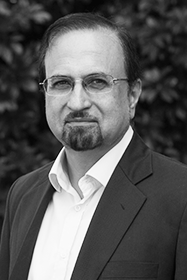
Australia ranks among the 10 countries with the highest number of centenarians per capita of population. The oldest Australian is a 112-year-old woman in Blackburn in Victoria, while the oldest person in the world today is a 116-year-old woman in Japan.
A major study of centenarians conducted at CHeBA recruited 350 participants. According to Perminder Sachdev, the study aimed to assess which participants were cognitively intact and how they differed from those who developed dementia. “We also wanted to look at risk and preventive factors, and to take DNA from their blood samples to map their genome and look at markers of change or variation,” he says.
The study wound up last year and the data is currently being analysed, but it dispelled the myth that dementia, disability and disease were inevitable in old age. About half of the participants, who ranged from 95 to 111, were functioning physically and mentally, and most were still living in the community.
Dr Charlene Levitan, an associate lecturer at UNSW, co-ordinated the centenarian study. “We are looking for the key to successful ageing to determine the genetic and environmental factors that contribute to longevity so we can all live longer and lead healthier lives,” she says. “But the aim of our research is to add life to years, not years to life.”
Scientists estimate that genes are 30 per cent responsible for longevity. Professor Sachdev is currently conducting an Older Australian Twin Study (OATS), looking at 600 twins over 65 in NSW, Victoria and Queensland. Half of the twins are identical and half fraternal. “Twins are a great source of determining if traits are genetic or environmental, and we are doing a four-year follow-up to assess how much is due to genes or to lifestyle factors.’’

